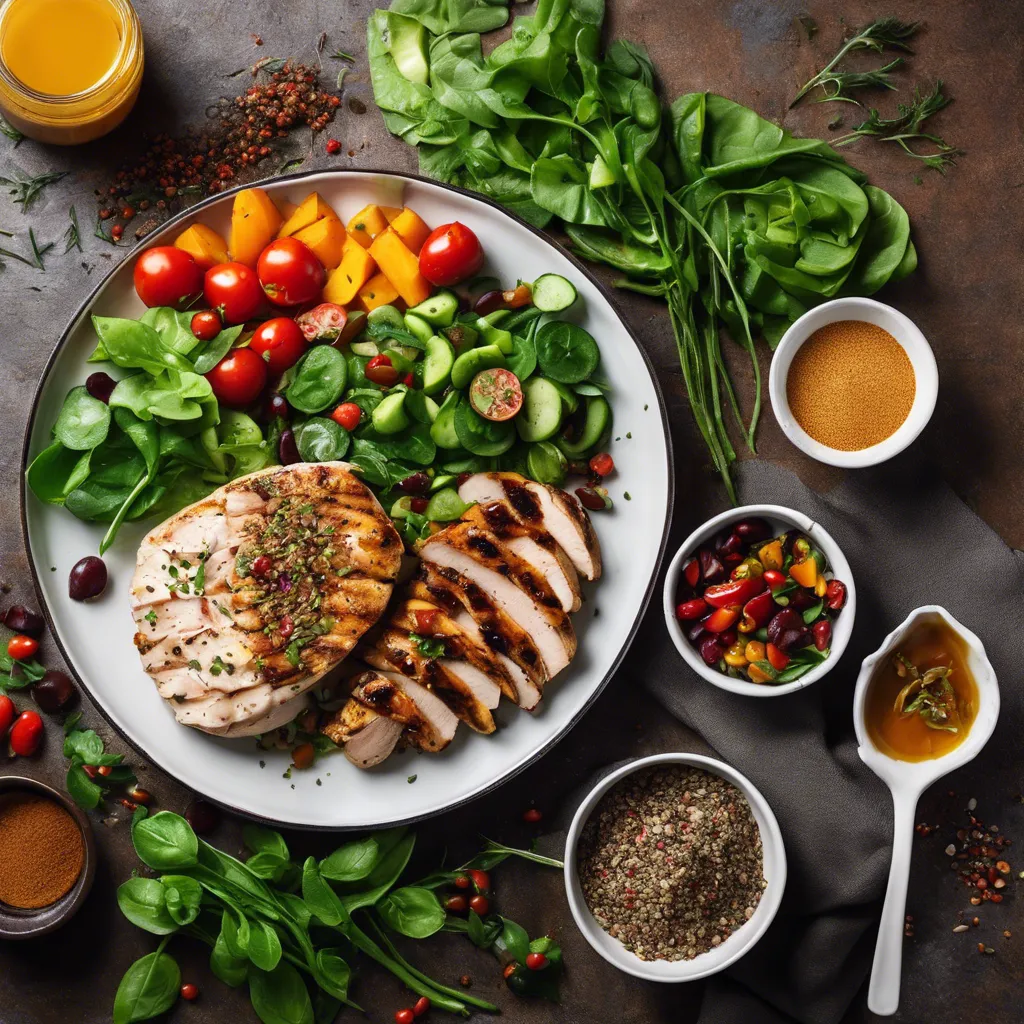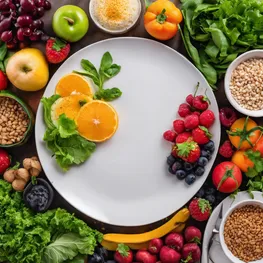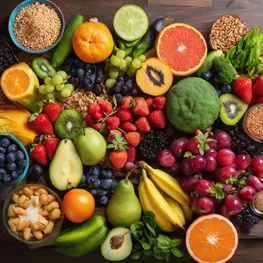Table of contents
- Mastering the Art of Blood Sugar Control
- The Impact of Nutrition on Blood Sugar Levels
- Unveiling the Health Benefits of Wholesome Recipes
- Creating Balanced and Flavorful Recipes to Manage Blood Sugar
- Delectable and Nourishing Recipes that Regulate Blood Sugar
Are you looking for delicious recipes that won't cause spikes in your blood sugar levels? Look no further! In this article, we will explore a collection of wholesome and tasty recipes specifically designed to be friendly to your blood sugar. Say goodbye to the guilt and enjoy satisfying meals that will keep you healthy and happy.
Mastering the Art of Blood Sugar Control
Understanding blood sugar and its impact on health is crucial for mastering the art of blood sugar control.
-
What is blood sugar?
Blood sugar, also known as glucose, is the primary source of energy for the body. It is produced when carbohydrates from food are broken down during digestion.
-
How does blood sugar affect health?
Having consistently high or low blood sugar levels can lead to various health issues. High blood sugar, known as hyperglycemia, can increase the risk of developing diabetes, heart disease, and kidney damage. On the other hand, low blood sugar, called hypoglycemia, can cause confusion, dizziness, seizures, and in severe cases, unconsciousness.
-
The role of insulin
Insulin is a hormone produced by the pancreas that helps regulate blood sugar levels. When blood sugar levels rise after a meal, insulin is released to transport glucose from the bloodstream into cells, where it is either used for energy or stored for later use. Insufficient insulin production or resistance to its effects can result in high blood sugar levels.
-
Maintaining optimal blood sugar levels
Achieving and maintaining optimal blood sugar levels is essential for overall health. This can be achieved through a balanced diet that includes complex carbohydrates, fiber, and protein, regular physical activity, and managing stress levels. Monitoring blood sugar levels regularly and taking prescribed medications, if necessary, are also crucial for controlling blood sugar.
-
The importance of blood sugar control
Proper blood sugar control is vital for preventing and managing chronic conditions such as diabetes. It helps reduce the risk of complications, such as heart disease, nerve damage, and kidney problems. Additionally, stable blood sugar levels promote consistent energy levels, mental clarity, and optimal overall health.
The Impact of Nutrition on Blood Sugar Levels
Proper nutrition plays a crucial role in managing blood sugar levels. A balanced diet, rich in fiber, lean protein, and healthy fats, can help regulate blood sugar and prevent spikes. Monitoring carbohydrate intake and consuming low-glycemic index foods are also important for blood sugar management.
Unveiling the Health Benefits of Wholesome Recipes
Wholesome recipes can help stabilize blood sugar levels by incorporating whole grains, lean proteins, and high-fiber ingredients. These nutrient-rich foods slow down the release of glucose into the bloodstream, preventing spikes in blood sugar levels and promoting better glycemic control.
Creating Balanced and Flavorful Recipes to Manage Blood Sugar
Managing blood sugar levels can be a challenge, especially when it comes to finding delicious recipes that won't send your glucose levels soaring. But with a few simple modifications, you can create balanced and flavorful dishes that are blood sugar-friendly.
-
Choose whole, unprocessed ingredients
Opt for whole grains, fresh fruits and vegetables, lean proteins, and healthy fats. Avoid processed foods that may contain added sugars or unhealthy additives.
-
Control portion sizes
Be mindful of the amount of food you eat. Stick to recommended portion sizes to help regulate your blood sugar levels.
-
Reduce added sugars
Replace added sugars with natural sweeteners like stevia or monk fruit, or use spices like cinnamon or vanilla to add sweetness without the added sugar.
-
Choose low glycemic index foods
Opt for foods that have a low glycemic index, such as whole grains, legumes, non-starchy vegetables, and lean proteins. These foods are digested more slowly and have a minimal impact on blood sugar levels.
-
Increase fiber intake
Include high-fiber foods like whole grains, fruits, vegetables, and legumes in your recipes. Fiber helps slow down the digestion and absorption of carbohydrates, preventing spikes in blood sugar levels.
-
Incorporate healthy fats
Include sources of healthy fats like avocado, nuts, seeds, and olive oil in your recipes. Healthy fats help slow down digestion and promote satiety, preventing sudden blood sugar spikes.
-
Use cooking methods that require less or no added fat
Opt for grilling, baking, steaming, or broiling instead of frying. These methods require less or no added fat, reducing the overall calorie content and preventing excessive blood sugar fluctuations.
-
Experiment with flavorful herbs and spices
Instead of relying on added salt or sugar for flavor, experiment with herbs and spices to enhance the taste of your recipes. This can make your dishes more enjoyable without compromising on blood sugar control.
Delectable and Nourishing Recipes that Regulate Blood Sugar
Maintaining healthy blood sugar levels is essential for overall well-being. But who says you have to compromise on taste to regulate your blood sugar? Here are some delectable and nourishing recipes that will not only satisfy your taste buds but also help keep your blood sugar in check:
-
Baked Salmon with Garlic and Herbs
Salmon is an excellent source of omega-3 fatty acids, which have been found to improve insulin sensitivity and regulate blood sugar. This recipe combines the rich flavors of garlic and herbs to create a delicious and blood sugar-friendly dish.
-
Quinoa Salad with Roasted Vegetables
Quinoa is a nutrient-dense grain that is low on the glycemic index, making it a great choice for managing blood sugar. Toss it with roasted vegetables like bell peppers, zucchini, and cherry tomatoes for a colorful and flavorful salad.
-
Sweet Potato and Black Bean Chili
Swap the traditional ground beef with black beans and add nutrient-packed sweet potatoes to create a hearty and blood sugar-friendly chili. The combination of fiber and protein in this dish helps slow down the absorption of sugar into the bloodstream.
-
Spinach and Mushroom Omelette
Start your day with a protein-packed omelette filled with spinach and mushrooms. Spinach is rich in magnesium, which has been shown to improve insulin sensitivity, while mushrooms add a savory touch to this blood sugar-friendly breakfast option.
-
Berry and Yogurt Parfait
Satisfy your sweet tooth with a delicious and blood sugar-friendly berry and yogurt parfait. Layer fresh berries like strawberries, blueberries, and raspberries with Greek yogurt and a sprinkle of nuts for a nutritious and satisfying dessert or snack.
In conclusion, these blood sugar-friendly recipes offer a delicious and nutritious solution for individuals looking to maintain stable blood sugar levels. By using wholesome ingredients and mindful cooking techniques, it is possible to create meals that are both tasty and beneficial for those with diabetes or pre-diabetic conditions. Whether you're seeking a hearty breakfast option or a satisfying dinner dish, these recipes provide a range of flavors and textures to suit your palate. Incorporating these blood sugar-friendly recipes into your diet can contribute to better overall health and improved management of blood sugar levels.
Frequently asked questions related to wholesome and tasty recipes
What are blood sugar-friendly recipes?
Blood sugar-friendly recipes are meals or dishes that are designed to help regulate blood sugar levels. They usually have a low glycemic index and contain a balance of carbohydrates, protein, and healthy fats.
Can blood sugar-friendly recipes be suitable for different dietary preferences or restrictions?
Yes, blood sugar-friendly recipes can be adapted to different dietary preferences or restrictions. They can easily be made vegetarian, vegan, gluten-free, or dairy-free by swapping out ingredients or making substitutions.
What are some examples of blood sugar-friendly ingredients?
Some examples of blood sugar-friendly ingredients include whole grains, legumes, lean proteins, healthy fats (like avocados and nuts), non-starchy vegetables, and low-sugar fruits.
Why is it important to maintain stable blood sugar levels?
Maintaining stable blood sugar levels is important for overall health and well-being. It helps prevent spikes and crashes in energy levels, promotes weight management, reduces the risk of developing chronic diseases like diabetes, and supports optimal brain function.
Can blood sugar-friendly recipes still be tasty?
Absolutely! Blood sugar-friendly recipes can be both wholesome and tasty. With the right combination of ingredients and seasonings, you can create delicious and satisfying meals that support stable blood sugar levels.
Are there any specific cooking techniques to consider for blood sugar-friendly recipes?
When preparing blood sugar-friendly recipes, it's generally best to avoid deep-frying or using excessive amounts of oil. Instead, opt for healthier cooking methods like grilling, baking, steaming, or sautéing with minimal oil.







